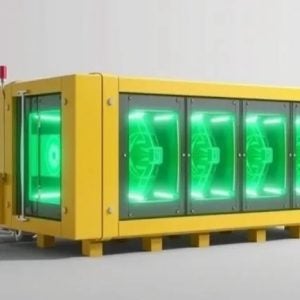A new report by the UN Economic Commission for Europe (UNECE) explores the potential for nuclear energy as part of the energy portfolio and shows how the utilisation of local or regional uranium resources can provide a platform for sustainable development. The 155-page report, “Application of the United Nations Framework Classification for Resources and the United Nations Resource Management System: Use of Nuclear Fuel Resources for Sustainable Development – Entry Pathways”, was prepared by the UNECE's Expert Group on Resource Management (EGRM) with support from experts at the International Atomic Energy Agency (IAEA), the OECD Nuclear Energy Agency (NEA) and the World Nuclear Association (WNA).
However, the report notes that the views expressed “do not necessarily reflect” those of the UNECE, IAEA, NEA or WNA or their member states or members. In addition none of those organisations or their members “assume any responsibility for consequences which may arise from its use, nor make any warranties of any kind in connection with the report”.
The report says the world’s energy sector is undergoing a profound transition driven by the need to expand access to clean energy to support socio-economic development, especially in emerging economies, “while at the same time limiting the impacts of climate change, pollution and other unfolding global environmental crises”. This “requires a shift from the use of polluting energy sources towards the use of sustainable alternatives”. The Covid-19 pandemic highlights “the importance of resilience in the energy system” and is a motivation for countries to ‘build back better’. There are many pathways to achieve this transition “and each country will pursue its own route”.
The report has chapters on nuclear energy and sustainable development; nuclear development considerations; national and regional considerations; nuclear reactor technologies; and nuclear energy entry pathways.
The UN’s sustainable development goals (SDGs) are “an indispensable tool for decision-makers” facing these difficult decisions. “This report explores the potential for nuclear energy as part of the energy portfolio and shows how the utilisation of local or regional uranium resources can provide a platform for sustainable development.
It explores potential entry pathways in the context of local and regional factors, including the utilisation of domestic uranium resources, which could facilitate nuclear energy and economic development by applying the United Nations Framework Classification for Resources (UNFC) and United Nations Resource Management System (UNRMS).” The report says UNFC and UNRMS support a refocus on the 2030 Agenda for Sustainable Development and action on climate change, notably SDG 7 (affordable and clean energy) and SDG 13 (climate action), “to put natural resources on service for society”. Many of the approaches presented in the report “are not only relevant to nuclear energy, they can be applied to other energy resources as well”.
Many nuclear newcomers are now making steady progress in their journeys to introduce nuclear energy while others are poised to embark upon that journey, the report notes. It looks at some of the key options available to newcomers and some of the challenges. It also explores potential entry pathways in the context of local and regional factors, including the utilisation of domestic uranium resources, which could facilitate nuclear energy and economic development by applying the UNRMS.
Key insights include:
- Nuclear energy is indispensable for achieving global sustainable development and has a crucial role in decarbonising the energy sector, as well as eliminating poverty, ending hunger, providing clean water, affordable energy, economic growth, and industry innovation.
- Nuclear energy entry pathways for newcomers align with SDGs while nuclear programmes, based on the IAEA’s Milestones Approach, support national energy needs, socio-economic, and environmental goals, and can help meet international climate commitments.
- There are many sustainable options for implementing a nuclear fuel cycle and waste management strategy. Countries should adopt strategies based on their needs, domestic mineral resources, technical capabilities, and the economic opportunities offered by different fuel cycle options.
- Currently available nuclear reactor designs are based on mature and proven technologies, with some licensed to operate for 80 years. A range of designs are available offering high levels of safety and outstanding performance as well as reliable, affordable and low-carbon electricity.
- A wide range of small modular reactor and advanced reactor designs are under development, some ready for near-term deployment, which offer enhanced flexibility and can help to decarbonise heat and transport as well as electricity.
- Nuclear innovation and hybrid energy systems are catalysts for integrated development and strengthening linkages between the nuclear sector and other clean energy technologies and non-energy sectors.
- There are many ways in which nuclear and renewable energy technologies complement each other for delivering clean, affordable and reliable energy.
- For a nuclear programme to succeed, policy makers should prioritise: nuclear energy policy, electricity market design, international cooperation, regulatory harmonisation, nuclear skills and supply chain development, project structuring and management, public engagement, and building diversity and inclusivity.
The report “is expected to contribute to optimal natural resource management, wherein certain fundamental principles of sustainable resource management can be used as guideposts.”






